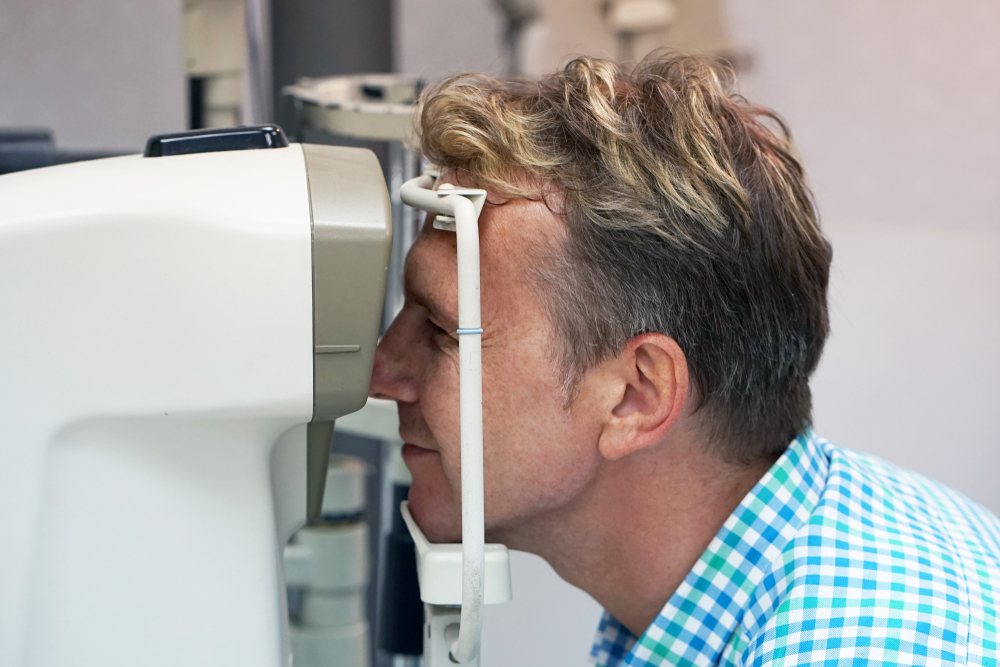Vision One Eyecare Blog
Learn more about optometrist care in our blog!

Dry eye disease affects countless individuals, and while over-the-counter drops and basic therapies can help, some patients need more advanced care. At Vision One Eyecare, our doctors offer advanced dry eye treatment in Katy, including Intense Pulsed Light (IPL) therapy - a breakthrough solution designed to target the root cause of evaporative dry eye linked to Meibomian Gland Dysfunction (MGD). But before recommending IPL in Katy, our doctors take time to perform a comprehensive evaluation using the latest diagnostic tools to ensure it’s the right treatment for you.

If you’re thinking about getting contact lenses for the first time, you might be wondering what to expect at your appointment. Contact lenses can be a great alternative to glasses, offering clear vision and convenience for everyday life. At Vision One Eyecare, we take the time to ensure your first experience with contacts is comfortable, safe, and successful.

For patients with irregular corneas, severe dry eye, or complex vision needs, scleral lenses have become an advanced and effective solution. Unlike traditional contact lenses, scleral lenses vault over the cornea and rest on the white part of the eye (the sclera), creating a smooth optical surface and a fluid-filled reservoir that protects and hydrates the eye. But how successful are these specialty lenses in restoring vision and comfort?

Many vision problems begin silently, without pain or noticeable symptoms. By the time you realize something is wrong, the condition may already be advanced. At Vision One Eyecare, we believe the best way to protect your vision is by catching issues before they start and a comprehensive eye exam is your first line of defense. With the help of advanced tools like retinal imaging, we can detect early signs of disease and take action before your eyesight is affected.

Parents work hard to support their children’s health and education, but one important area that’s often overlooked is their vision. Myopia is increasingly common in kids and can impact everything from classroom learning to long-term eye health. If your child is squinting to see the board or sitting too close to the TV, it could be a sign of myopia. At Vision One Eyecare, we’re committed to helping Katy families understand how myopia progresses and what can be done to manage it early and effectively.

Myopia, or nearsightedness, is becoming increasingly common in children around the world. While traditional glasses correct blurred distance vision, they don’t stop myopia from getting worse. New solutions are emerging that help slow the condition’s advancement. One of the most promising innovations is anti-myopia glasses. Already popular in countries around the world, these specialized lenses are now making their way to the U.S. and offer an exciting new way to manage childhood myopia.

Eye infections can affect people of all ages and often appear suddenly, causing discomfort, redness, and irritation. While some infections are minor, others can pose a threat to your vision if not treated properly. At Vision One Eyecare, we believe that understanding the causes, knowing the symptoms, and taking preventative steps are essential to protecting your vision and eye health.

For individuals who struggle with traditional contact lenses or suffer from certain complex eye conditions, scleral lenses may offer the clarity and comfort they’ve been searching for. At Vision One Eyecare, we specialize in providing advanced vision solutions that are designed to meet your unique needs and help you see the world more clearly.

If you’ve ever dealt with red, irritated, or uncomfortable eyes, you know how frustrating it can be to figure out what’s causing the problem. Two common culprits—dry eye and blepharitis—often share similar symptoms, making it easy to confuse one for the other. While they can occur separately, they often go hand in hand, which is why getting the right diagnosis is key to finding real relief.

Diabetic retinopathy is a serious eye condition that affects individuals with diabetes, potentially leading to vision loss if left untreated. It develops when high blood sugar levels damage the blood vessels in the retina, causing them to swell, leak, or close off completely. Understanding the signs, risks, and treatment options for diabetic retinopathy is essential for preserving eye health.







